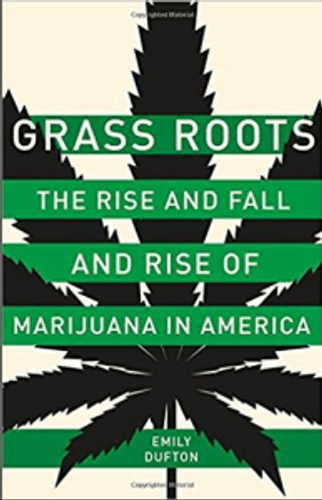El Chapo Guzmán (beta, 1.0) – Prison Escape and Drug Smuggling in the Early 20th Century
- Adam Rathge
- Jan 26, 2016
- 4 min read
Updated: Aug 29, 2023

The border was undoubtedly an early hotspot for drug smuggling following passage of the Harrison Narcotics Act in 1914. For all intents and purposes, the Harrison Act was the federal government’s first comprehensive drug control legislation. Technically a revenue-raising taxation measure, the law erected a series of barriers to both the sale and importation of drugs like opium and cocaine. Though historians have shown that black-markets and underground economies for these drugs existed prior to Harrison, marshalling the oversight of an emerging federal bureaucracy ultimately served to accelerate those trends. Contemporary newspaper stories and research studies show that it also shed light on the burgeoning business of drug smuggling activities along the U.S.-Mexico Border (to say nothing of Canada).
Quite interestingly, these early twentieth century accounts yield descriptions of cat-and-mouse games played by drug smugglers and border patrol agencies, much like those so often portrayed as unique to our more recent war on drugs. For example, in May 1916, the El Paso Herald ran a brief story on the “Illegal importation of morphine, cocaine and marihuana or Indian hemp, carried in the frame of a bicycle.” According to the report, Francisco Benavides had used the hollow tubing found throughout the bicycle frame to smuggle “prohibited drugs from Juarez.” In 1919, reporter Leslie Dowell revealed that, barely fifteen years after the Wright brother’s first controlled flight, drug smugglers were using airplanes to elude U.S. patrols. Assigned by New York City’s The Sun newspaper to conduct a special investigation of drug smuggling across the Mexican border, Dowell also found that drugs were “hidden in almost unbelievable places on the human body.” Dowell also learned drugs were smuggled “in oil cans and gasoline tanks of automobiles, in the hair on women’s heads, in coat linings, in pencils and pens.” In the 1920s, New Orleans police arrested members of a local “narcotics ring” with more than fifteen false-bottomed suitcases used to transport drugs across the Mexican border. While the scale of such smuggling activity a century ago likely pales in comparison to the quantities moved by today’s drug cartels, the nature of the smuggling game remains largely the same.

Just fifteen years after the Wright brother’s first controlled flight in 1903, drug smugglers were already using airplanes to avoid U.S. law enforcement on the Mexican border.
In much the same manner, among the subject files of the Bureau of Narcotics and Dangerous Drugs held at the National Archives, I’ve found tantalizing evidence for what I’ve come to call “El Chapo (Beta)” or perhaps “El Chapo 1.0.” The story comes from a November 1934 letter to the Secretary of State from the American Consulate in Matamoros, Tamaulipas, Mexico. Entitled “Attempted Jail Break at Matamoros; Discovery of Quantities of Marihuana” the letter provides the outline of a prison break with some similar parallels to El Chapo’s July 2015 escape from Altiplano. Though eighty years prior there was no motorcycle on tracks or ventilation shafts, there was both a tunnel and previous prison escapee.
According to the letter, a jailer on duty in the Matamoros prison was aroused by loud sounds coming from one of the cells. Upon investigation, he found a group of ten prisoners armed with iron bars, clubs, and pointed weapons. He ordered them to put down their weapons as they advanced on him. He then fired his revolver, killing one of the prisoners and injuring several others. Having subdued the outbreak, prison officials conducted a search of the prison quarters and found “four digging tools, fashioned from broken automobile springs and iron rods.” Prison authorities also discovered a “considerable quantity of marihuana that was found concealed inside the cells.” Finally, a more thorough investigation revealed “a cleverly concealed tunnel leading from cell number 7 in the direction of the patio of a nearby residence.”
In this case the tunnel-bound escape attempt was apparently foiled by prison guards, but the slain inmate carried still more similarities to El Chapo. A search of the prison records revealed his name was Pedro Espinosa Miller. The last name indicating his mother’s maiden name sparked a rumor that he may have been a “native of the United States” – which is what appears to have sparked the letter to the Secretary of State. Nevertheless, this turned out not to be the case, as prison officials ultimately determined that Espinoza Miller “was a native of Mazatlan, Sinaloa, Mexico,” that he “was serving an eight-year sentence for robbery and traffic in marihuana,” and that “he had escaped from prison in 1930.”
As a Sinaloan-born drug-trafficking prison escapee, Espinoza Miller’s story draws a striking resemblance to that of El Chapo Guzmán, just as the nature of drug smuggling in the early twentieth century shows stark similarities to the modes and methods still used a century later. The false-bottomed suitcases, hidden bicycle compartments and stashes in the human body used in the early twentieth century remind us that very little is new in the world of twenty-first century drug smuggling. Surely the scale and the violence of today’s traffickers loom as products of an increasingly escalated war on drugs, but perhaps only an understanding of the long history of this game between smugglers and law enforcement provides the perspective necessary to place that escalation in its proper context.





